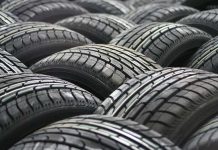The car troubleshooting sector is undergoing significant development, driven by technological innovation. Valued at $40.51 billion in 2024, the market is projected to reach $55.93 billion by 2029, reflecting a compound annual growth rate (CAGR) of 7.0%.
—
## Sector Insights and Market Forecasts
### Present Situation and Key Factors https://diagxcar.com/
The automotive diagnostic tools market is propelled by growing vehicle sophistication, particularly in safety technologies and electric powertrains. tight environmental standards further mandate precise diagnostics to ensure compliance.
—
## Technological Innovations Reshaping Troubleshooting
### AI and Machine Learning Integration
Machine learning systems are overcoming traditional limitations like human error and variable evaluations. Systems like Cloud-based predictive tools use cognitive models to analyze automotive metrics, reducing service time by 30% through predictive alerts for components like engines and energy storage systems.
—
## Impact of Electric and Autonomous Vehicles
### Electric Vehicle Troubleshooting Issues
Electric vehicle analysis require dedicated systems for electric powertrains. Tools like Advanced diagnostic scanners offer extensive memory and 13.6-inch displays to handle complex data from energy storage units. Solar-integrated EVs, such as Advanced solar cars, further necessitate analysis systems for tracking solar panels and power management.
—
## Area-Specific Sector Insights
### Developed Regions
These regions lead due to mature vehicle markets and high adoption of smart car solutions. The CHIPS Act has spurred $52 billion in semiconductor investments critical for EV diagnostics, while the General Data Protection Regulation mandates protected information management in online platforms.
—
## Hurdles and Constraints
### Technological and Financial Barriers
Steep upfront expenses for high-tech systems, such as cognitive analysis devices priced over $5,000, limit small-scale adoption. Rapid technological obsolescence forces regular updates, straining finances for small repair shops.
—
## Upcoming Innovations and Possibilities
### AR and VR Technologies
AR glasses overlay troubleshooting guides onto physical components, reducing service time by 35%. Ford’s VR simulators train technicians on battery-powered car solutions, enhancing learning efficiency by 50%.
—
## Final Analysis
The automotive diagnostics industry stands at a pivotal juncture, where machine learning, connectivity, and sustainability converge to redefine car repair. While challenges like data protection issues and skilled labor gaps persist, strategic investments in cloud infrastructure and collaborative R&D—such as NVIDIA’s partnerships with major manufacturers—will drive market leadership. Stakeholders must prioritize adaptable technologies, ensuring analysis evolve in lockstep with car technological progress to deliver more reliable, efficient, and sustainable transportation systems.

















